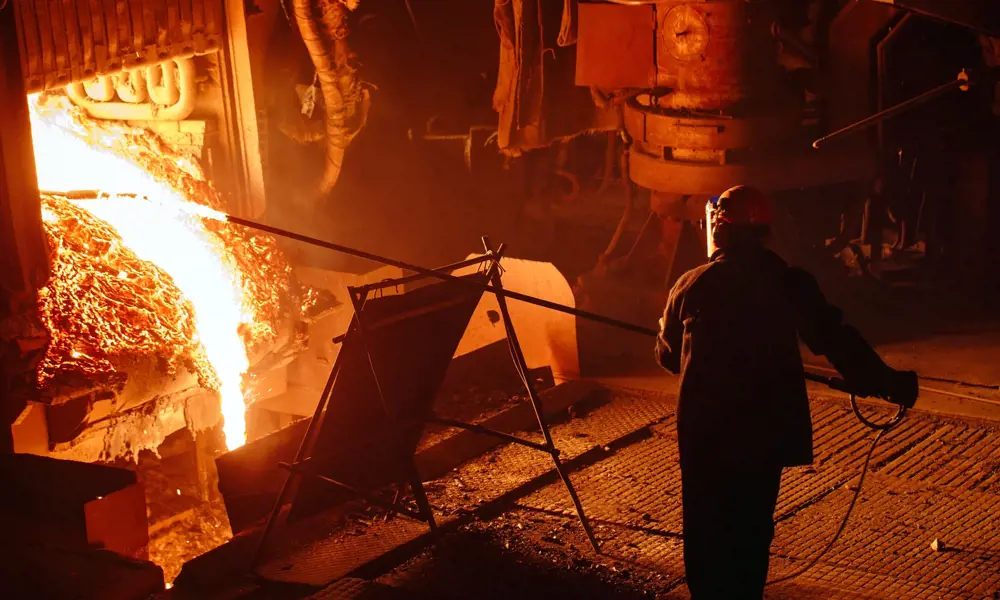
Greening the UK’s steel industry
Did you know?
🤘 It's a pretty vital metal...
- Steel is essential for the wind turbines and solar panels we’re going to need to get to net zero – so we need to make it more sustainably
- Applying a high enough electric current between the electrodes in an electric arc furnace generates temperatures that can melt scrap steel
- About 70% of steel made in the US is made using electric arc furnaces, compared to just over 26% on average elsewhere in the world
Steelmaking is one of the world’s most polluting industries, estimated to account for 7 to 9% of our greenhouse gas emissions. According to World Steel, every tonne of steel made in a blast furnace (the dominant method of making steel) produces on average 2.32 tonnes of CO2.
Cutting emissions by reducing the amount of steel we make is a tall order, as in the years to come, demand for the material is expected to increase in many regions. We’ll also need a lot of steel to make the wind turbines, solar panels and other products and infrastructure that support a green society.
In the UK, 15% of all industrial emissions come from the blast furnaces sited at Port Talbot and Scunthorpe. Our ability to reach the government’s net zero targets will, in part, depend on our ability to make cleaner steel. What can we do to clean up this carbon-intensive industry, securing a more sustainable future for us and the UK’s steel sector?
Cleaning up ironmaking
Historically, most of the UK’s steel will have started life in a blast furnace, where coke (a fuel derived from coal), iron ore and limestone are blasted with air at up to 1,600°C. The coke ignites to produce carbon monoxide, a chemical reducing agent. This removes the oxygen from the iron oxides found in the ore, turning them into pure iron. The output: molten iron with a high carbon content, and carbon dioxide.
The liquid metal is then transferred to another vessel, called the basic oxygen furnace. Here, a stream of oxygen reacts with the carbon present in the hot metal, producing steel, carbon monoxide and carbon dioxide. (Read about how steelmaking works in more depth.)
It is the first of these two stages that creates the most CO2 emissions, through burning fossil fuels (primarily coke), as well as the chemical release of carbon dioxide. So, getting rid of the coke is one way to lessen the carbon emissions from steelmaking. But as coke must be burnt to produce the reducing agent carbon monoxide, you need another way to reduce the iron from the ore.
Getting rid of the coking coal is one way to lessen the carbon emissions from steelmaking. But as coke must be burnt to produce the reducing agent carbon monoxide, you need another way to reduce the iron from the ore.
A short-term solution to decrease emissions is to reduce the amount of coke required in the existing blast furnace process by injecting other reducing agents such as gas, gasified biomass or hydrogen. This approach means we can continue to use existing equipment, avoiding the significant environmental (and financial) costs of demolishing and rebuilding. “If we do [use another reducing agent], then we don’t have to change the process entirely,” says Joachim von Schéele. Schéele is an expert in green steel working at Linde, a global manufacturer of industrial gases that can be used in steelmaking. “We can use the big assets that we have.”
However, looking long term, removing coke from the equation entirely would cut emissions more drastically. This involves exposing iron ore to reducing gases (such as natural gas or hydrogen) at high temperatures – but still below its melting point. Iron made in this way is called direct reduced iron (DRI) and consumes much less fuel than iron made in a blast furnace. On average, DRI creates some 1.4 tonnes of CO2 per tonne of hot metal.
The lowest-carbon approach to DRI would involve reducing the iron ore with green hydrogen, made by splitting water with renewable energy. This is something Linde is exploring, along with startups such as Sweden’s H2 Green Steel. However, the technology is still very new: the latter is building a plant and aims to begin production in 2025. It also requires an abundant source of renewable energy. Estimates suggest if the UK’s blast furnaces were converted to DRI fuelled by green hydrogen, it would use up to 17% of the UK’s renewable energy supply.
Going electric
Electric arc furnaces (EAFs) make steel primarily from recycled scrap steel. Rather than burning coke, they use electricity to melt the metal. For every tonne of steel made in an EAF from scrap, 0.67 tonnes of CO2 is produced. In future, this process will be even cleaner if the electricity is 100% renewable. For this reason, the steelworks at both Port Talbot and Scunthorpe will be replacing their blast furnaces with EAFs in the coming years.
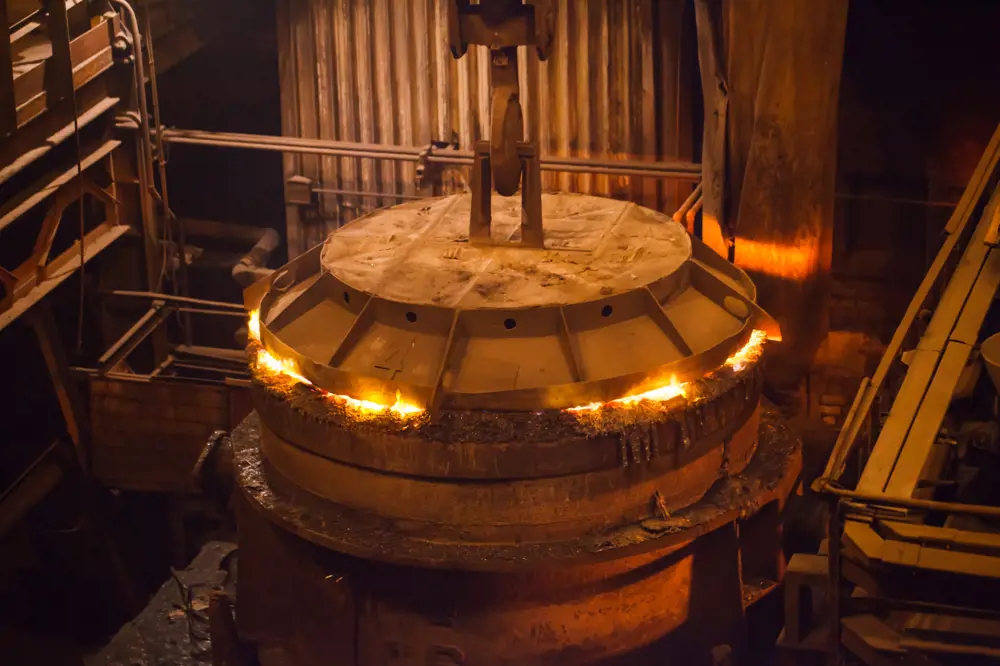
An electric arc furnace. Its characteristic domed roof is closed over the bowl-shaped hearth. Electrodes protruding from the roof are melting scrap steel inside © Shutterstock
From an environmental perspective, this sounds like a good move, especially as steel is the most recycled material in the world. It also means we can put the scrap we produce to use, rather than exporting it – in 2022, the UK exported more than 8 million metric tonnes of scrap steel. However, the story is more complicated than that.
For one thing, the availability and quality of scrap steel is variable. There are more than 3,500 different grades of steel, says Dr Becky Waldram from SUSTAIN, a network led by Swansea University researching carbon-neutral, resource-efficient UK steel supply chains. This means that to produce high-quality steel in EAFs, we need a handle on where scrap comes from and what it’s made of.
It’s like the computing term “garbage in, garbage out”, she explains. “If you put rubbish scrap in, you’re going to get a rubbish product out the other end … [but] the more you know about the material that goes in, the more confidence you can have in the material that’s going to come out.”
For every tonne of steel made in an EAF from scrap, 0.67 tonnes of CO₂ is produced. In future, this process will be even cleaner if the electricity is 100% renewable.
Sorting scrap steel so that similar grades are recycled together will improve the quality of the steel that can be made in EAFs. “We need to make sure we’re looking at circular supply chains, so it becomes more obvious where certain end-of-life products need to go, and how they can be recycled in a more efficient way,” Waldram says. However, it’s worth noting that there are also emissions and costs associated with sorting. Another consideration for carbon emissions is pre-treatment, which is also necessary before scrap can be remade into steel.
Another way to boost the quality is to ‘dilute’ scrap with iron. In relative terms, this decreases the amount of residual elements you might find in scrap. Iron from a blast furnace or DRI are both suitable ingredients for the job. “That sort of material will be needed because in general, you cannot put 100% scrap in an electric arc furnace and get a high-quality product out the other end,” Waldram says. The caveat is that both blast furnace iron and DRI are considerably more carbon intensive than scrap steel.
That’s not all. Certain components in cars, rail, aerospace, and high-tech applications require steel with a precise composition. As it stands, only blast furnace processes can economically provide this. So, without its own blast furnaces, the UK will still have to import virgin steel to the industries that demand it. But blast furnaces abroad still generate emissions, and so do the cargo ships required to move it to the UK.
Finally, while a move to EAF should make the UK’s steel industry more sustainable on balance, going all in on the technology has costs. These aren’t just financial (although EAFs are estimated to cost over £1 billion each). As EAFs need fewer people to operate, the move puts the jobs of thousands of steelworkers at risk at both sites. At the time of writing, more than 4,000 jobs are to be cut at the UK’s key steelmaking sites.
Putting carbon to good use
While the days of our blast furnaces in the UK may be numbered, what of the over a thousand others elsewhere in the world? Could capturing and re-using their carbon emissions be a route to keeping them in play?
At the University of Birmingham, Professor Yulong Ding FREng (a member of Ingenia’s editorial board) and Dr Harriet Kildahl have developed a way to do just this. In a 2023 paper, the team reports that its approach could reduce carbon emissions from blast furnace steelmaking by up to 88%.
The key player is a material called a perovskite. Perovskites are a family of crystalline compounds with properties useful for energy storage and conversion. Researchers are investigating how to use them in products including solar panels and fuel cells.
Back in 2020, Kildahl was researching perovskites for her PhD with Ding. The perovskite they had developed – a mixture of inorganic (non-carbon-containing) compounds ground up and baked into a slab – bound carbon dioxide at 700°C. When heated to 800°C, it gave off carbon monoxide, while some oxygen stayed bound to the structure.
During lockdown, she was intrigued by proposals to open a new coking coalmine for steelmaking in Cumbria. She started looking into how blast furnaces worked. “I started noticing that the inputs of the blast furnace were the outputs of my process, and the outputs of the blast furnace were the inputs of my process.”
Kildahl took the idea to Ding, her PhD supervisor, whose background is in steel. “The more we looked, the better it fit.” So how would it work in practice?
“I started noticing that the inputs of the blast furnace were the outputs of my process, and the outputs of the blast furnace were the inputs of my process.” Kildahl took the idea to Ding, her PhD supervisor, whose background is in steel. “The more we looked, the better it fit.”
When iron is made in a blast furnace, CO2 and nitrogen are generally vented from the top as by-products. But in Ding and Kildahl’s innovation, this CO2 is captured and passed over the perovskite, which sits in a reaction chamber outside the blast furnace. The perovskite splits the CO2 into carbon monoxide and oxygen.
This lets two things happen. Firstly, the carbon monoxide can be extracted with a gas separation unit and fed back into the blast furnace to continue reducing the iron ore. Secondly, the perovskite becomes saturated with oxygen. Flushing nitrogen – another waste product from the blast furnace – through the reaction chamber liberates the oxygen. This can then be used in the basic oxygen furnace where steel is made. The entire system is closed. According to Ding, on top of the carbon emission reduction, the perovskite will improve the energy efficiency of ironmaking compared to the already highly optimised blast furnace approach.
However, he notes that coke also ordinarily plays an important structural role in blast furnaces, ensuring even gas flow through the molten iron. As only a fraction of the input coke is needed for Ding and Kildahl’s approach, the team has suggested a ceramic could work in its stead.
So far, they have tested the system with up to 100 grams of material. Now in talks with steelmakers and other members of the supply chain, the next step for the Birmingham team is to try it out at a larger scale. “We’re actually expecting that the process benefits from scaling up,” says Kildahl. They believe this is because only surface layers of their prototype perovskite slab were being effectively used.
The team has now redesigned the material so that it is porous yet still strong, which should enable more efficient and effective use of the perovskite than in the small-scale tests. Ultimately, it will reduce the input material requirements and hence be even more resource- and cost-effective, says Ding.
Once the team has made these strides, the closed-loop system can be retrofitted to existing plants. “One of the … biggest benefits of the system … is that we’re not left with these massive, stranded assets,” says Kildahl. “We have to think about people and being able to actually use these blast furnaces to the end of their natural lifetimes. We don’t need to lose all the skilled blast furnace workers who’ve worked so hard for so many years.”
It may be too late for the UK’s blast furnaces, but steel facilities beyond our borders will be seriously considering how this technology can help them retain workers and plants with many years of use left. While the team initially had blast furnaces in mind, Ding explains it can also be retrofitted to DRI reactors – enabling an even greater reduction in carbon emissions for this type of ironmaking.
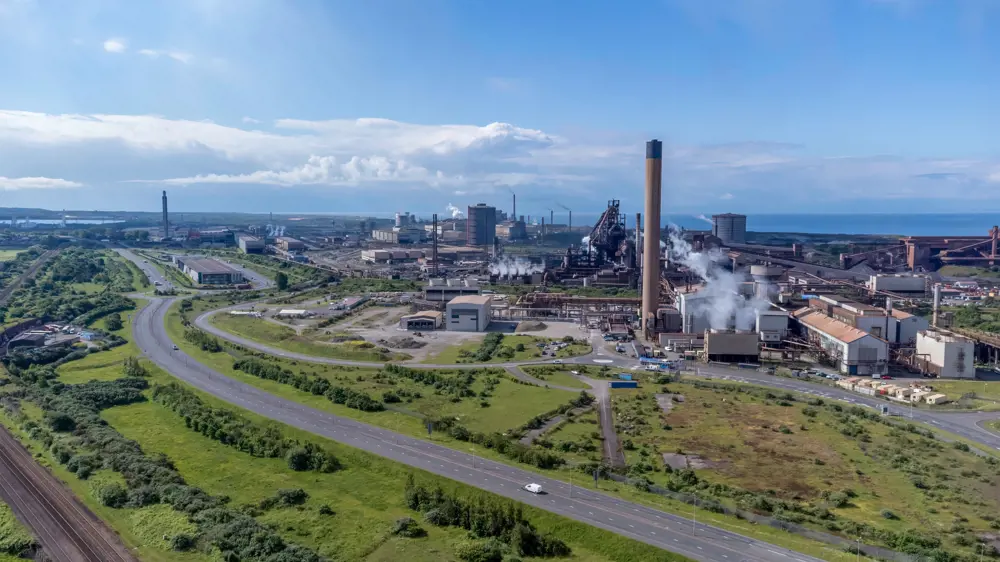
Port Talbot’s steelworks in South Wales, owned by India’s Tata Steel, is Europe’s second largest steelmaker. The blast furnace here is closing so that the company can open an electric arc furnace instead © Shutterstock
The future in UK steel
Many routes to decarbonisation already exist for the steel industry, so we are not starting from scratch. Schéele says that the pathway to decarbonisation requires us to consider two things in parallel: What do we need to develop? And what can we do now? “It’s a journey, though we should not forget about what we can do today,” he says. Short-term focus should be on energy efficiency, he says, noting that first you burn less, then you burn clean.
With the UK’s remaining blast furnaces set to close by the end of the year, it is important that we act now to ensure a smoother transition to electric arc, says Waldram. This may mean importing DRI pellets and steel slab to help ‘dilute’ the scrap steel in EAF, she says. “There is going to be a gap in Port Talbot between the blast furnaces closing and electric arc furnaces starting up. There are jobs that people can take on to help in this transition.” She adds: “Electric arc is the future, but it’s what we do in the short term to get through that transition.”
In Europe, the picture is similar. Steelmakers Tata (in the Netherlands), Thyssenkrupp (in Germany) and ArcelorMittal (in France) are all planning to transition to DRI and EAFs within the next two decades. Globally, questions remain about how quickly the world’s largest steel producers, India and China – still largely reliant on coke-powered blast furnaces – can decarbonise. However, there has been a welcome overall acceleration in the pace of change. A July 2023 report from Global Energy Monitor, which tracks the world’s fossil fuel and renewable energy projects, showed that 43% of planned steelmaking facilities will be based on EAF technology. A year before, this figure was at 33%.
Back in the UK, various organisations are moving to find ways to save the jobs at Port Talbot and Scunthorpe and to ensure that steelworkers’ skills, developed over many generations, are retained. Another outcome of ensuring some continuity for the industry is the potential to inspire future generations. “We need to be inspiring them to get into manufacturing, not saying we’re closing everything, and you can’t be involved in it,” Waldram says. “We need to show young people there are still manufacturing jobs in the UK, and they can help us move towards a more sustainable future in steelmaking.”
Contributors
Joachim von Schéele is based in Munich, Germany, he has been working with process and manufacturing industries across the world. He is focused on decarbonisation including use of hydrogen in steel, metals, mining, and other hard-to-abate industries. Joachim von Schéele has published more than 200 papers, mainly on energy and emission conservation, recycling, and production, and authored chapters in five books. He received his MS and PhD from the Royal Institute of Technology in Stockholm, Sweden, and a BA from Stockholm University.
Dr Becky Waldram works at Swansea University, as the Impact & Engagement Manager for the SUSTAIN Future Steel Manufacturing Research Hub. This project focusses on greener, cleaner and smarter steelmaking technologies. Within SUSTAIN, she works with the academic research teams across the Hub’s themes of Carbon Neutral Iron & Steelmaking and Smart Steel Processing to disseminate the research findings to the wider academic and industrial communities. Becky also participates in outreach activities with school groups and families to raise awareness of Materials Science & Engineering and the SUSTAIN project.
Dr Harriet Kildahl completed her PhD in chemical engineering in 2022 at the Birmingham Centre for Energy Storage. She is now helping industry decarbonise in her role as an ESG (environmental, social and governance) consultant at Inspired ESG, and is an Honorary Research Fellow at the University of Birmingham.
Professor Yulong Ding FREng is Founding Chamberlain Chair of Chemical Engineering at the University of Birmingham. His current research interests are in energy materials, energy process engineering and industrial decarbonisation, and he leads Birmingham’s steel decarbonisation taskforce. Yulong is a member of Ingenia's editorial board.
Leonie Mercedes is a freelance writer based in London.
Keep up-to-date with Ingenia for free
SubscribeRelated content
Design & manufacturing
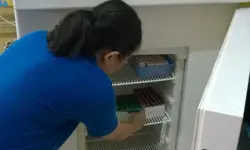
Super cool(er)
Welsh startup Sure Chill has developed a cooler that uses the properties of water to keep its contents cool for around 10 days without electricity. This is ideal for storing items such as vaccines where electricity sources are unreliable.

R&D investment makes good business sense
In just five years, Dr Ralf Speth FREng has presided over a revolution in design and manufacturing that has helped create a new family of engines and has overhauled Jaguar Land Rover (JLR) production facilities.
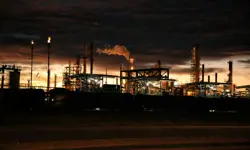
Steel can arise from the ashes of coal
Thousands of people were laid off in the UK steel industry in 2015 and there are pessimistic future forecasts. Professor Sridhar Seetharaman of the Warwick Manufacturing Group argues that smaller, flexible steel mills implementing new technology would better cope with fluctuating global trends.
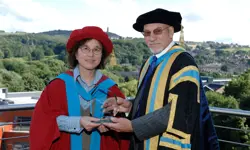
Integrating metrology in business and academe
Professor Jane Jiang’s interest in measuring began when she worked on a bus production line in China. She found that the best way to improve quality, consistency and productivity was through metrology, the science of measurement. Today, she runs the UK’s largest metrology research group.
Other content from Ingenia
Quick read

- Environment & sustainability
- Opinion
A young engineer’s perspective on the good, the bad and the ugly of COP27

- Environment & sustainability
- Issue 95
How do we pay for net zero technologies?
Quick read

- Transport
- Mechanical
- How I got here
Electrifying trains and STEMAZING outreach

- Civil & structural
- Environment & sustainability
- Issue 95